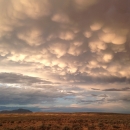Quantifying Carbon Storage and Greenhouse Gas Emissions in Sagebrush Rangelands to Inform Management for Carbon Resilience
Funding Year | Amount | Location |
FY24 | $134,408 | Rangewide, Great Basin-wide |
Project Description
Substantial below-ground carbon is stored in sagebrush sagebrush
The western United States’ sagebrush country encompasses over 175 million acres of public and private lands. The sagebrush landscape provides many benefits to our rural economies and communities, and it serves as crucial habitat for a diversity of wildlife, including the iconic greater sage-grouse and over 350 other species.
Learn more about sagebrush rangelands, but is difficult to characterize how it varies across the landscape and in response to disturbance, landcover change, and restoration. This project will synthesize and map the heterogeneity of carbon storage across the Great Basin and link the sagebrush conservation design to carbon dynamics, and create a resource that land managers can use to inform management actions.
Partners
U.S. Geological Survey, U.S. Fish and Wildlife Service – Science Applications


